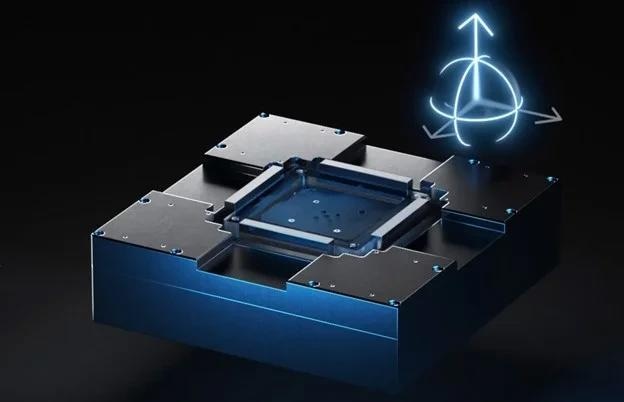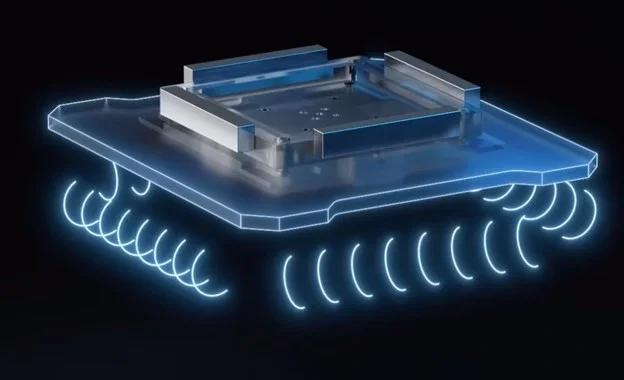Dr. Christian Rudolf, an expert in parallel kinematics and magnetic drives, provides insights into PI's journey in developing magnetic levitation solutions for the semiconductor industry.
“What makes magnetic levitation so unique, is the contactless virtual bearing — across multiple degrees of freedom — we can achieve within our control system.”
“When we first spoke about that technology and the development, my first thoughts were, how cool is that - we will make objects fly! You know those things only from science fiction.”
Technology Leadership Interview: Magnetic Levitation - Future of Nanopositioning | PI
Technology Leadership Interview: Magnetic Levitation - Future of Nanopositioning. Video Credit: PI (Physik Instrumente) LP
Contactless, Friction-Free, and Vibration Free
Air bearings and flexures are well known for their frictionless guiding properties. However, they can have limitations, in case of flexures, it is the short travel range and in case of the air bearing, a monolithic system wiith all 6 degrees of freedom is not available. The uniqueness of magnetic levitation technology lies in the creation of a contactless, virtual bearing within the mechanical system devoid of any physical contact — yet capable to control motion in all 6 degrees of freedom — on a single moving platform. Therefore, this technology can tackle many disadvantages present in current mechanical bearing solutions.
For instance, stick-slip effects based on mechanical interaction within the system are eliminated, with performance and precision reliant solely on the sensors and control electronics. Integrating advanced nanopositioning sensors and control algorithms enables precision down to the nanometer and even the picometer range.

XY scanning stage with magnetically guided platform allows for full control of all 6 degrees of freedom to reduce pitch, yaw, roll, flatness, and straightness errors. Image Credit: PI (Physik Instrumente) LP
Due to contactless magnetic guides, there is a complete lack of abrasion or particle generation in the system, ensuring a long lifetime without wear and tear. This lack of wear guarantees consistent performance throughout the lifespan, even during intense use in high-duty cycle and high-dynamics applications.
The lack of mechanical contact also eliminates vibrations and particle generation, enabling the system's deployment in delicate environments such as ultra-high vacuum and high-class clean rooms.
Overcoming Limitations of Conventional Bearings and Guiding Systems
While existing solutions may excel in precision or cleanliness individually, they often lack speed or other crucial attributes. However, the new magnetic levitation technology presents a comprehensive solution that meets all these requirements simultaneously.
Many promising results emerged after assembling the initial functional model and putting it into operation. Witnessing the system's stable flight was immensely exciting, especially as it adhered perfectly to the set requirements.

Magnetic levitation principle – the platform is supported by magnetic fields only. Image Credit: PI (Physik Instrumente) LP
PI prioritizes collaboration with customers for optimal outcomes, aligning its technology roadmap to cater to the client's specific application needs.
Magnetic Levitation Technology in Brief
Picometer Resolution: High dynamics and resolutions down to the picometer range are achieved through the combination of magnetic guiding technology and dedicated high-precision drive and sensor tech.
Active Control in 6 Degrees of Freedom: The capability to actively control and define guiding features across six degrees of freedom allows for additional correction tasks, such as Z-axis focusing or tip/tilt adjustments, during operation.
Contactless Operation: The frictionless guiding principle, free of rolling parts, lubrication, and airflow, ensures high precision throughout the service life and permits usage in cleanroom environments.

This information has been sourced, reviewed and adapted from materials provided by PI (Physik Instrumente) LP.
For more information on this source, please visit PI (Physik Instrumente) LP.